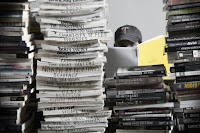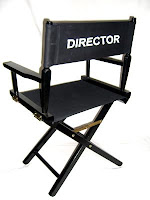Ex-Machina (2015)
Producer/Production companies:
This movie was produced by DNA films in collaboration with Film4 along with many international distributors all over the world such as Universal Pictures International, Universal Pictures, NOS Audiovisuals, A24, intercontinental video and Mongrel media. The production companies and distributors have distributed this film in around 14 different countries. DNA films is the same production company that worked on the movie '28 days later' which was made by the same writer and director that produced Ex_Machina, giving them a marketing point to go from when advertising as the film '28 days later' was very successful and gave DNA films some kind of positive reputation.
Andrew Macdonald (best known for 'Trainspotting', '28 days later' and 'Ex_Machina') and Allon Reich (best known for 'Ex_Machina', '28 weeks later' and 'The last King of Scotland') are the main producers that worked on this film alongside many executive and associate producers.
Director/Screenwriter:
Name: Alex Garland
Best Known for: '28 days later' (2002), 'Ex_Machina' (2015), 'Dredd' (2012) and 'Sunshine' (2007)
Awards:
- 2004: Nominated for Saturn Award by the Academy of Science Fiction, Fantasy & Horror Films, USA: Writing for 28 Days Later
- 2004: Won the Best Screenplay Award at the Fangoria Chainsaw Awards for his screenplay of 28 Days Later
- 2011: Won an award from the Writer's Guild of Great Britain (along with co-writer Tameem Antoniades) for his writing on the video game, Enslaved: Odyssey to the West (2010).
Actors (main cast):
Name: Domhnall Gleeson
Character: Caleb
Best known for: 'About time' (2013), 'Harry Potter and the Deathly Hallows: Part 2' (2011), 'Unbroken' (2014) and 'Ex_Machina' (2015)
Name: Corey Johnson
Character: Jay
Best known for: 'The Bourne Ultimatum' (2007), 'Captain Phillips' (2013), 'Saving Private Ryan' (1998) and 'Ex_Machina' (2015)
Name: Oscar Isaac
Character: Nathan
Best known for: 'Inside Llewyn Davis' (2013), 'Drive' (2011), 'Ex_Machina' (2015), 'A Most Violent Year' (2014)
Name: Alicia Vikander
Character: Ava
Best known for: 'Ex_Machina' (2015), 'A Royal Affair' (2012), 'The Man from U.N.C.L.E' (2015), 'Seventh Son' (2014)
Name: Sonoya Mizuno
Character: Kyoko
Best known for: 'Ex_Machina' (2015), 'Beauty and the Beast' (2017), 'The Theo Adams Company' (2015)
Name: Symara A. Templeman
Character: Jasmine
Best known for: 'Ex_Machina' (2015), 'Jupiter Ascending' (2015), 'Darkness' (2014)
Name: Gana Bayarsaikhan
Character: Jade
Best known for: 'Ex_Machina' (2015)
Name: Claire Selby
Character: Lily
Best known for: 'Ex_Machina' (2015)
Name: Tiffany Pisani
Character: Katya
Best known for: 'Ex_Machina' (2015), 'Britain and Irelands next Top Model' (2005), 'Hollyoaks' (1995)
Name: Elina Alminas
Character: Amber
Best known for: 'Ex_Machina' (2015), 'Residue' (2015), 'Cinderella' (2015), 'Jupiter Ascending' (2015)
Budget/Box office sales/Screens shown on:
This film was made on an estimated budget of 15 million dollars and after being a huge success aroun the world, has brought in over 36 million dollars worldwide and has had many positive reviews from critics all around. In the USA the film made $250,000 on its opening weekend in April 2015, being shown on around 1,255 screens. During May of 2015, the film had its highest selling point, reaching around $3,510,000 and was shown on over 2000 screens.
Composers:
Name: Geoff Barrow
Other works: 'Lord of War' (2005), 'Wild' (2014), 'Columbiana' (2011), 'Assassins' (1995)
Name: Ben Sailsbury
Other works: 'Beyoncé: Life is but a Dream' (2013), 'Inside the Perfect Predator' (2010), 'The life of Mammals' (2002)
Marketing:
The production designer for this film is Mark Digby, notable foe his work in other films such as 'Rush' (2013), 'Slumdog Millionaire' (2008) and 'Dredd' (2012).
A viral marketing campaign was designed and in the USA which used the famous dating site Tinder to raise awareness for the Sci-Fi thriller. The robot in the film is played by the Swedish actress, Alicia Vikander and using her pictures, the marketing team set up a robot account on Tinder which asked fellow users what makes them human and what attracted them to Ava. This clever marketing scheme was designed to test the audience and almost involve them in the film as they had a brief experience of what the protagonist experiences in the movie.
Alongside this, a series of films posters and teaser trailers were also made and shown through TV advertising and general poster advertisements.
Special effects:
The largest area of special effects was used on the actress Alicia Vikander as she plays, Ava - the robot. Most of her body has CG effects put onto it to make her look as though parts of her body are made of machinery and certain parts are completely see through. The only parts of her that are kept as skin are the face, hands and feet.
Special technology was used to make sure that Alicia looked as robotic as she could when playing Ava whilst still being able to move exactly the way a human would. To do this, she was taken into a photo booth and scanned from head to foot, from there a team then built her CG elements which were then refined to match the live action photography. An anamorphic lens was applied which could have been an issue as the rig used had to be 'astonishingly flexible' in order to convey the human likeness of Ava. This lens meant that if Alicia wasn't completely in focus then the image would be distorted and it would then have to be reverted back to how the image was originally.
Flares were used to create the almost sterilised brightness that is used in the house to create the feeling that the house is more of a research/hospital facility. It also conveys the fact that the movie is of the science fiction genre as flares are typically used to create a flashy futuristic atmosphere.
Technical Specifications:
| 1 hr 48 min (108 min) |
| Dolby Digital | SDDS | Datasat |
| Black and White (some shots) | Color |
| 2.35 : 1 |
| GoPro Hero 3 Black Edition Sony CineAlta F65, Cooke Xtal Express, Kowa Prominar and Angenieux Optimo Lenses Sony CineAlta PMW-F55, Cooke Xtal Express, Kowa Prominar and Angenieux Optimo Lenses |
| Molinare, London, UK |
| AXSM SRMemory Video (HD) |
| Digital Intermediate (2K) (master format) J-D-C Scope (anamorphic) (source format) Kowa Scope (anamorphic) (source format) (some scenes) |
| D-Cinema |
Issues:
One of the main issues when shooting this movie was the fact that the lens used to create Ava's robotic yet human feel happened to distort a lot of the images within the filming. The anamorphic lens tended to reflect and distort everything around it, which interrupted the smooth, polished continuity that the directors wanted to create. However, this effect is successful in creating a false sense of intimacy with the audience.















